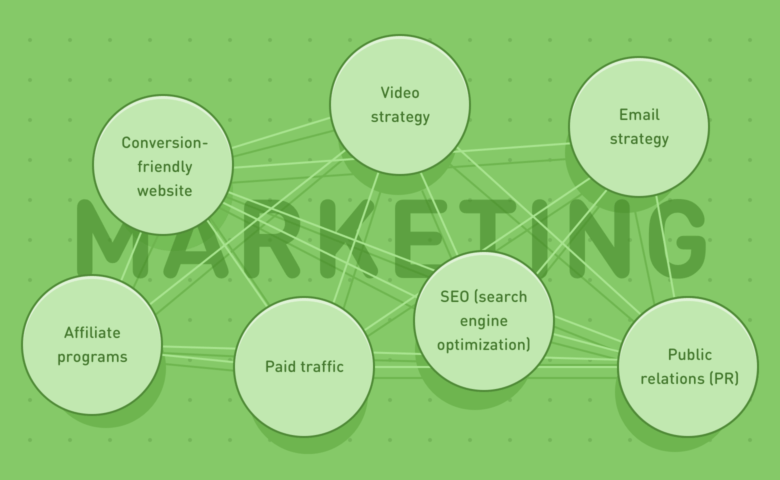Our new App Business section is brought to you by MacPaw, maker of proven Mac apps.
So you’re going to launch an app for Mac. Congrats! Now you’ve got to figure out an app marketing strategy that will get it to the widest audience possible.
There are many ways to approach the birth of a new product, but even in a field as fast-growing and dynamic as the world of apps, experience has yielded accepted wisdom about the best ways to start and maintain a successful campaign. Here are great rules of thumb for maximizing impact and customers for your app.
Set up your app marketing strategy
Define your markets and target audience
You may hear people say “this app can be used by anyone,” but defining the target audience for your app is much more important than trying to please everyone.
That’s harder than it sounds, because saying something like “this app is for Mac Users ” doesn’t cut it — you’ll need to understand your users’ demographics, educational backgrounds, careers, goals, challenges and pains (and, of course, their shopping preferences).
One way to get this info is to conduct online surveys. Over time, you can develop a starting roster of three to five “buyer personas” that will help shape and inform your app’s development.
Determine the value proposition
Once you’ve got your product and target market dialed in, you’ll need to define exactly what it is you’re offering your customers. This can be a tough task, especially if you aren’t on point with it from the earliest steps, and it’s going to take a lot of time and effort (and probably a few false starts) before it comes together in a way that makes sense (and money).
If you lack experience in identifying a value proposition that moves units, you can consult a whole bunch of great books, articles and frameworks to get moving in the right direction. One book we’d suggest is Value Proposition Design by Strategyzer (not a MacPaw product).
Whatever route you choose, the value proposition will require attention throughout the launch process and beyond.
Define the pricing model
How you price your product is tied closely with how you identify your buyers, and offers another way to meet their wants and needs. In the apps world, subscription pricing — foregoing a single purchase price for a regular fee paid over time — is a hot topic.
Sound familiar? It should, because the monthly payment model is all over the place (think Apple Music, Netflix, Spotify and Dropbox). It seems lots of users are willing to pay a small monthly fee when they get the sense that there is real value for them in it.
Setting up subscription pricing can be a great way to underline that your product is worth developing a relationship with. Unfortunately, options for subscription models remain limited in the Mac space.
Establish your distribution channels
For a Mac app developer like yourself, there are basically three main channels for distribution — within the Mac App Store, outside the Mac App Store, or both. Each has its pros and cons. Apple’s store provides a powerful and concentrated user network, but a much wider variety of distribution, pricing and other options await outside the Mac App Store.
We’ve covered alternative distribution channels before, and you can learn a lot more about what real developers think of each app distribution channel in the results of MacPaw’s comprehensive Mac developers survey.
Build your launch plan
There are so many ways to approach the launch of an app, with endless opportunities to innovate and experiment. The right strategy for your app depends on balancing the product itself with its target audience and your own goals.
Depending on what your app is or does, you can try to stir up some advance buzz, engaging early adopters with a private beta release that gives them a taste of your innovation. Or maybe you want to go full-on SpaceX, with a massive launch that brings your app to people’s attention with one big, loud release. Just make sure that if you do so, you keep things to a whisper beforehand so the launch seems that much louder.
Marketing steps and deliverables

Image: MacPaw
Many developers can avoid common mistakes by saving the marketing until after the previous five steps have been worked out. Once you clearly understand who your app is for, what value it offers your customers (and how much they should pay for it), how to manage app distribution (whether within the Mac App Store, outside the App Store or or both), and how/when to schedule your big release, you‘re ready to start running down this checklist for marketing steps and deliverables:
Craft a conversion-friendly website
Make sure your website is well-designed, easy to navigate, and clearly conveys the value of your product. Remember: The main job of an app’s website is to convert viewers into buyers.
Create a video strategy
Video is king right now. It’s clearly the preferred means of transmitting and consuming content, and it’s easily integratable with other aspects of your campaign (website, email, social media, etc.). Compelling video content is not easy to create, but video is a powerful tool that’s well worth an investment of time and money to get right.
Email strategy
Speaking of email, it’s one of the key tools for demonstrating the value of your product, raising awareness, and onboarding customers as part of your broader app marketing strategy . If you’ve got a few users already, this is one of the best ways to reach them with new releases and other announcements.
For those users who might be on a trial version, email is also a fantastic way to convert them into paid users. Make sure you send subscribers useful tips to help them more easily develop a relationship with your app — find ways to be of service and help them see the value of your product.
“We pay a lot of attention to onboarding email campaigns, and by improving their quality and constantly testing, we’ve improved the conversion rate of trial to paid users from 4 percent to 12 percent during last 12 months, ” says Yaroslav Stepanenko, product marketing manager at MacPaw.
Partnering with other developers on shared email campaigns is a very effective way to increase users for everybody. Just make sure you and your app are prepared for these kinds of alliances, and that you choose partners whose products make sense sharing the bill with your own.
Affiliate programs
Too many businesses ignore affiliate programs or wait too long to implement this compelling option into their app marketing strategy . You’d be surprised how many clients can be brought to you by someone else. So look for synergy, folks, and make it work for you.
Paid traffic
Every day, your potential customers ask Google to help them deal with their pains and challenges. Since they very well might be looking for what you’re offering, be sure your search ads show up to meet them with the right message — and the answer to their problem.
SEO (search engine optimization)
Even if your ad is right at the top of Google’s search results, lots of people simply ignore paid ads. Making sure your website rises to the top of organic search results is a way to ensure even the ad-averse can see your app.
Social media marketing
Like everyone else, your potential customer (or their buyer persona, if you prefer) spends lots of time on Facebook, Twitter and other social media. Reaching them there can be gold, but be cautious: They’re not using social media to see your ads, so make sure to present your message the right way — as helpful hints, lifehacks, etc.
Public relations (PR)
For your product to get legs, the press needs to cover it. Keep in mind everything about your app marketing plan — from buyer personas to your product’s unique value proposition — as you communicate with the press. That way you can make sure your message connects with the potential customers you’re aiming to attract.
Got that? Now you’re ready to launch your app
While all these app marketing steps might seem like a lot of work — especially if one or more of them lies outside your area of expertise — each and every one is crucial for your software’s success.
Nothing can guarantee that your Mac app will succeed. But if you follow this road map, you can rest assured that you’ve done everything you can to make your launch a winner.


